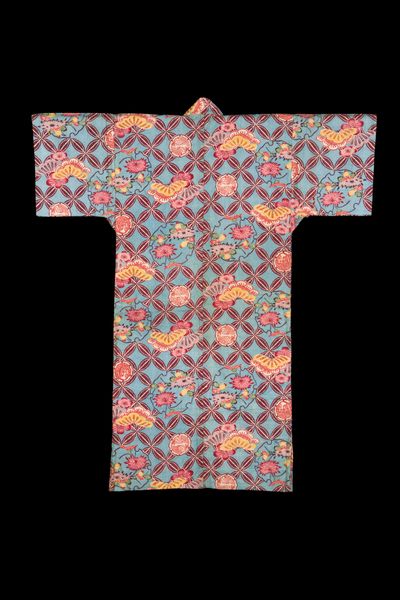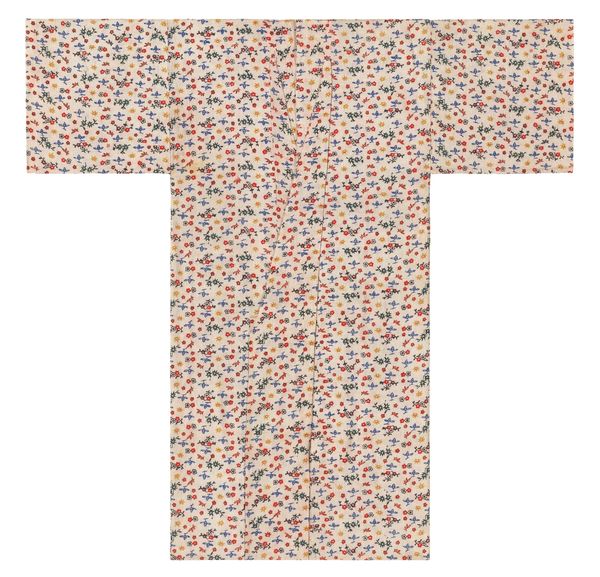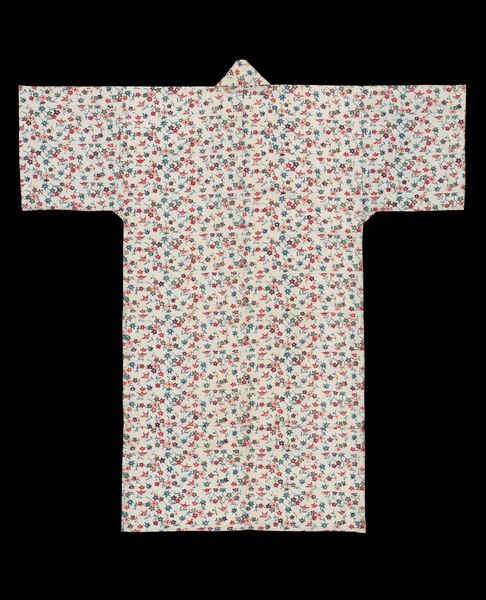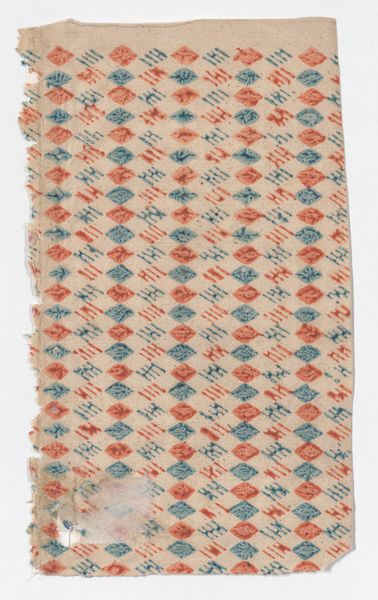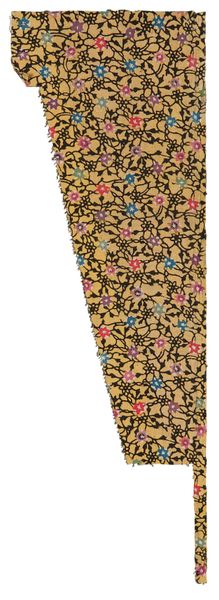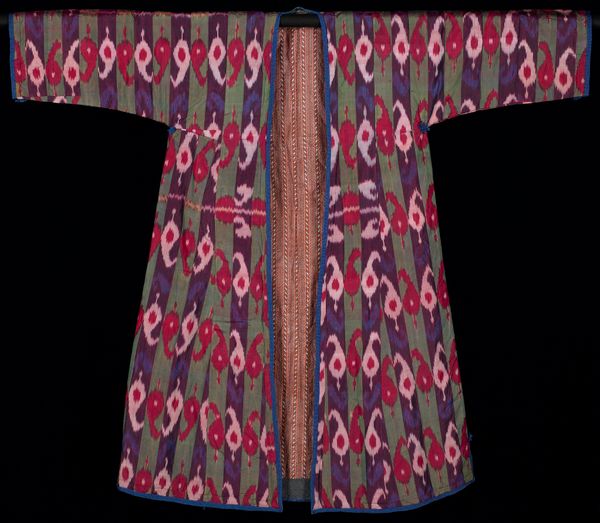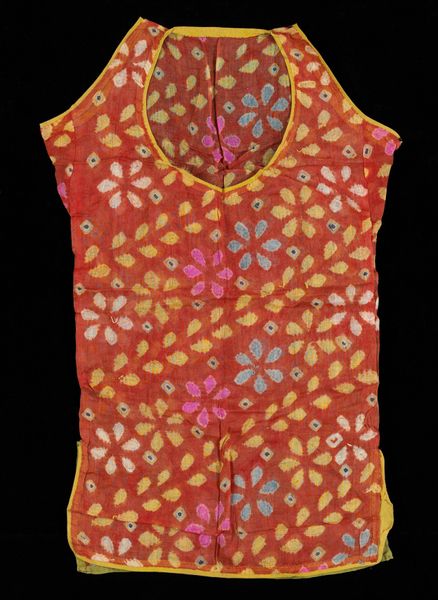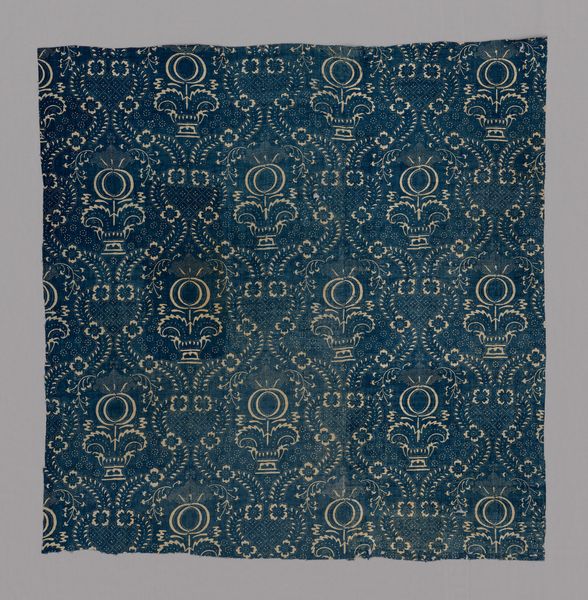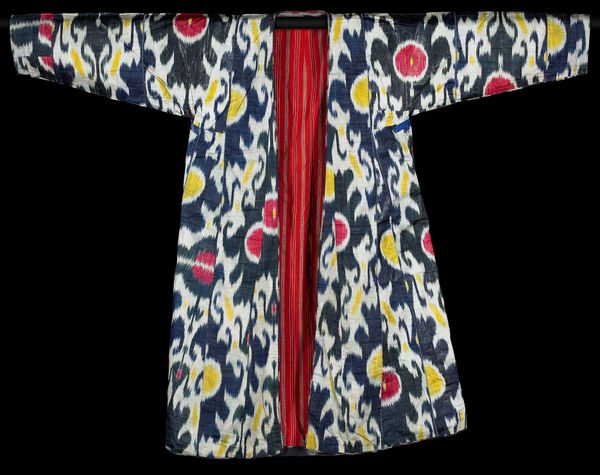
drawing, textile
#
pattern heavy
#
drawing
#
pattern
#
asian-art
#
textile
#
fashion and textile design
#
japan
#
pattern design
#
geometric
#
repetition of pattern
#
regular pattern
#
pattern repetition
#
textile design
#
decorative-art
#
imprinted textile
#
layered pattern
#
combined pattern
Dimensions: 41 × 43 1/2 in. (104.14 × 110.49 cm) (overall)
Copyright: Public Domain
This short kimono was likely made in Japan; its anonymous maker used cotton, dyed with a resist technique. The light, breathable cotton indicates this garment was probably made for warm weather. The all-over pattern is achieved through resist-dyeing, where parts of the fabric are blocked to prevent dye absorption. The motifs, including stylized plum blossoms and geometric shapes, suggest a blend of traditional and modern aesthetics. Cotton was not native to Japan, it was imported. So it speaks to a history of trade and cultural exchange. The resist-dyeing method is labor intensive, involving meticulous work to create intricate designs. Depending on the complexity and scale of production, kimonos like this would have been made either in a craft workshop, or in a factory setting. Either way, the garment embodies considerable labor, and a sophisticated understanding of materials and techniques. It's a fine example of everyday artistry, collapsing distinctions between craft, design, and fashion.
Comments
minneapolisinstituteofart about 2 years ago
⋮
This short upper garment is worn in combination with a skirt, called kakan. Together they comprise the formal attire of an Okinawan commoner; an aristocrat would have added a richly decorated outer robe. The pattern here is of plum blossoms against a swastika (manji) ground. The swastika, a symbol of divinity in Indian religions, arrived in Japan with Buddhism from China after 700CE. The left-facing form of the symbol represents the auspicious footprints of the Buddha. European pagan and North American Navajo traditions also adapted the swastika; in Pueblo culture, it represents wind. Its right-facing form, however, was appropriated by the National Socialist German Workers’ (Nazi) Party, and for many people its spiritual origins are overshadowed by its associations with German ultra-right nationalism and white supremacy ideology. This garment is arguably the exhibition’s most outstanding example of bingata, the process of stencil dyeing with resist paste. The dyework is exceptionally detailed and fine, as seen in the sharpness of the swastika pattern and the delicate shading achieved in the colors of the plum blossoms.
Join the conversation
Join millions of artists and users on Artera today and experience the ultimate creative platform.
